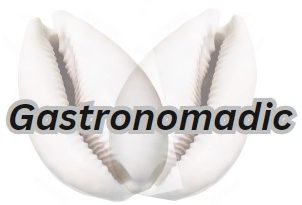History of salads
The history of salads is long and varied. The first salads were likely made with wild greens and herbs, and they were eaten by ancient peoples all over the world. In Roman times, salads were often made with lettuce, cabbage, and other vegetables, and they were seasoned with olive oil, vinegar, and herbs.
Salads became more popular in Europe during the Middle Ages, and they were often served as part of a feast. In 16th century, the French introduced the practice of using lettuce as the base for salads, and they also began to experiment with different dressings.
Around 18th century, salads became more popular in the United States, and they began to be served in restaurants. In the 19th century, the popularity of salads continued to grow, and new ingredients, such as tomatoes, cucumbers, and carrots, were added to salads.
Today, salads are a popular dish all over the world. They are available in a variety of different flavors and styles, and they can be made with a wide variety of ingredients.

Types of salads
There are many different types of salads, but some of the most common include:
- Green salads: This salads are made with leafy greens, such as lettuce, spinach, or kale, they are often dressed with a vinaigrette or other light dressing.
- Fruit salads: These salads are made with fresh fruits, such as berries, grapes, or melon. They are often dressed with a honey-lime dressing or other fruit-based dressing.
- Pasta salads: These salads are made with cooked pasta, vegetables, and a dressing. They are often served as a side dish or light meal.
- Cobb salad: This salad is made with lettuce, chicken, bacon, avocado, tomatoes, hard-boiled eggs, and blue cheese dressing. It is a popular salad in the United States.
- Caesar salad: This salad is made with romaine lettuce, croutons, Parmesan cheese, and a Caesar dressing. It is a popular salad in Italy and other parts of the world.
- Greek salad: This salad is made with tomatoes, cucumbers, onions, feta cheese, and olives. It is a popular salad in Greece and other Mediterranean countries.
Benefits of eating salads
Building Blocks of Salad Symphony
- Base Greens: The foundation of any salad, greens can range from the familiar lettuce and spinach to arugula, kale, and even watercress. They provide texture, color, and essential nutrients.
- Vegetables and Fruits: Add a burst of color, flavor, and nutrients by incorporating a variety of vegetables and fruits. From tomatoes and cucumbers to berries and citrus segments, these elements create a visual and flavorful feast.
- Protein: Protein sources like grilled chicken, shrimp, tofu, beans, or even sliced hard-boiled eggs transform a salad into a satisfying and filling meal.
- Cheese: From creamy goat cheese to tangy feta or bold blue cheese, the addition of cheese adds creaminess and a savory punch.
- Nuts and Seeds: Toasted nuts, seeds, or croutons provide a satisfying crunch and a layer of complexity to the salad’s texture.
- Dressing: The finishing touch that ties the components together, dressings can be creamy, vinaigrette-style, or even citrus-based. They add flavor and moisture, elevating the overall experience.
Tips for making a great salad
When making a salad, there are a few things you can do to make it great:
- Use fresh, high-quality ingredients.
- Choose a variety of colors and textures.
- Don’t be afraid to experiment with different ingredients and dressings.
- Season the salad well with salt and pepper.
- Serve the salad immediately.
With a little care and attention, you can make a great salad that everyone will enjoy.
Here are some additional tips for making a great salad:
- If you are using leafy greens, wash them thoroughly and dry them well.
- If you are using fruits, cut them into bite-sized pieces.
- If you are using vegetables, cook them until they are tender-crisp.
- If you are using a dressing, make sure it is not too thick or too thin.
- If you are serving the Cto a group of people, make it ahead of time and store it in the refrigerator.






One Response